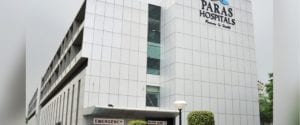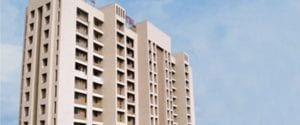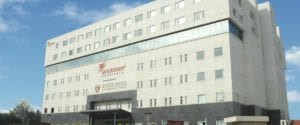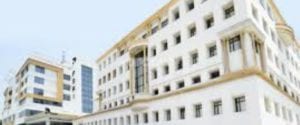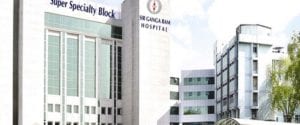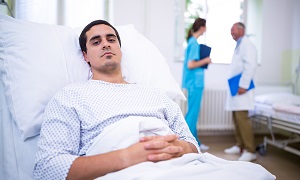Best Doctors in India for Bronchoscopy
Best Hospitals in India for Bronchoscopy
Paras Hospital, Gurugram
- City: Gurugram, India
Hospital Highlights:
- Paras hospital was established in 2006 and is the 250 bedded flagship hospital of Paras Healthcare.
- The is supported by a team of doctors of international and national repute.
- The hospital is NABH accredited and also the first hospital in the region to have a NABL accredited laboratory.
- The hospital provides specialty medical services in around 55 departments including Neurosciences, Joint Replacement, Mother & Child Care, Minimal Invasive Surgery, Gynecology and Obstetrics, Ophthalmology, Dermatology, Endocrinology, Rheumatology, Cosmetic and Plastic surgery.
- The hospital is equipped with state-of-the-art technologies.
S L Raheja Hospital, Mahim, Mumbai
- City: Mumbai, India
Hospital Highlights:
- SL Raheja hospital is a 140-bed multi-specialty tertiary care hospital that is being managed by Fortis Healthcare Ltd.
- The hospital is a benchmark in healthcare and medical facilities in the neighborhood of Mahim & the western suburbs.
- L.Raheja Hospital, Mahim has one of the most effective ICU and Casualty care services.
- The hospital provides specialty medical services in Cardiology, Oncology, Neurology, Orthopedics, Mother & Child Care, and in Diabetes.
Wockhardt Hospitals, Mumbai
- City: Mumbai, India
Hospital Highlights:
- Wockhardt Hospitals were established in the year 1973, originally called First Hospitals and Heart Institute.
- Wockhardt Hospitals are super specialty health care networks in India, nurtured by Wockhardt Ltd, India’s 5th largest Pharmaceutical and Healthcare company.
- Wockhardt Hospitals is associated with Partners Harvard Medical International, an international arm of Harvard Medical School, USA.
- Wockhardt Heart Hospital performed India’s first endoscopic heart surgery.
- The hospital has a state-of-the-art infrastructure equipped with the latest technologies and modern equipment.
- It has special Centers of Excellence dedicated to the major specialties to provide hassle-free and high-quality clinical care.
Pushpawati Singhania Hospital & Research Institute, New Delhi
- City: New Delhi, India
Hospital Highlights:
- Established in 1996, Pushpawati Singhania Research Institute is one of the top hospitals in the NCR region, as well as one of the top facilities in India for gastroenterology. The hospital is one of South Asia’s first institutes in medical and surgical treatment for diseases related to digestion.
- The hospital is equipped with state-of-the art facilities coupled with the latest equipment as well as renowned consultants from various parts of India as well as other parts of the world.
W Pratiksha Hospital, Gurgaon
- City: Gurugram, India
Hospital Highlights:
- W Pratiksha Hospital, Gurugram, is one of the best hospitals in the NCR region. It is also a top hospital in India for IVF. Since its inception, the hospital has performed over 5500 successful IVFs. The hospital also specializes in gynecology.
- With over 20 years of experience in providing quality healthcare, the hospital is known as one of the most trusted and valued health providers in India.
- Equipped with world-class medical facilities and advanced technology, the hospital’s doctors and clinicians also have a track record of delivering excellent results. The hospital is also known for focusing on preventive well-being as much as on curative treatment.
- The hospital has earned the trust of its patients, by providing the best available treatments at affordable costs.
Narayana Superspeciality Hospital, Gurugram
- City: Gurugram, India
Hospital Highlights:
- Situated near DLF Cyber City, Gurugram, Narayana Superspecialty Hospital is one of the top medical facilities in the Delhi NCR region, catering to the needs of the people. Known for its commitment to quality medical care and patient service, the hospital is a state-of-the-art facility with planned and well-equipped sections, which includes a spacious OPD area as well as comfortable patient rooms.
- It is the closest super-specialty hospital from Indira Gandhi International Airport towards Gurugram, and also the nearest super specialty hospital from DLF Cyber City. It is also close to major residential areas in Gurugram.
- It is part of the renowned Narayana Health Group. Established in 2000, by Dr. Devi Shetty, a renowned cardiac surgeon, it has grown to be one fo India’s leading healthcare groups.
Sir Ganga Ram Hospital, New Delhi
- City: New Delhi, India
Hospital Highlights:
- Sir Ganga Ram Hospital, New Delhi is known to provide the latest medical procedures with the latest technology in all of its units.
- The hospital has a team of reputed doctors, nurses, and healthcare professionals that ensure that patients receive quality care at affordable costs.
- Staffed with a team of highly qualified doctors, dedicated nurses, and paramedical and non-medical staff, the hospital aims to lead in healthcare delivery, medical education, training, and research.
- As per the vision of the founder, the hospital also provides free treatment to the economically weaker sections of society.
- Sir Ganga Ram Hospital also provides training to young doctors under the Diplomate in National Board(DNB) program. The DNB program at the hospital was started in 1984 and it is known for currently running the maximum number of DNB specialties in the country. It also has the distinction of having the first bone bank in India.
KIMS Hospital, Hyderabad
- City: Hyderabad, India
Hospital Highlights:
- KIMS Hospital (a brand name of Krishna Institute of Medical Sciences) is one of the largest and best multi-speciality hospitals in Hyderabad. The hospital provides various treatments to an enormous number of patients.
- The hospital has a capacity of more than 3000 beds. KIMS Hospitals offers different healthcare services in more than 25 specialities and super specialities.
- The hospital is equipped with modern medical equipment and technology. It has robotic equipment to provide minimal invasive techniques for patients.
- The hospital is aimed at providing world-class healthcare facilities and services at an affordable cost for patients.
- The various specialities and departments of the hospital include neurosciences, gastroenterology & hepatology, robotic science, reproductive sciences, dental science, oncological sciences, organ transplantation, heart and lung transplantation and mother and child care.
Fortis Hospital, Shalimar Bagh
- City: New Delhi, India
Hospital Highlights:
- Fortis Hospital in Shalimar Bagh is a multi-super specialty hospital that strives to provide world-class patient care by leaving no stone unturned.
- Fortis, Shalimar Bagh, with 262 beds and a 7.34-acre footprint, provides the best level of medical care through its team of doctors, nurses, technicians, and management professionals.
Reliance Hospital, Mumbai
- City: Mumbai, India
Hospital Highlights:
- Reliance Hospital is one of the best super-specialty care hospitals in Navi Mumbai.
- The main purpose of this hospital is to become a trustworthy place for the best health and hope for society. The hospital is well connected to the suburbs of Mumbai and Navi Mumbai.
- The hospital has various specialty departments, viz., Accident & Emergency, Anesthesiology, Dental Services, Dermatology, Diabetology, Dietetics Nutrition, Endocrinology, ENT, Gastroenterology, General Surgery, Gynaecology And Obstetrics, Hepato Pancreato Biliary Surgery, Infectious Disease, Internal Medicine, Interventional Radiology, Laboratory Medicine, Minimal Access Laparoscopic Surgery, Nephrology, Neurosciences, Opthalmology, Orthopaedics, Paediatrics, Pain Management Palliative Care, Physical Medicine Rehabilitation, Plastic And Reconstructive Surgery, Psychiatry, Pulmonary Medicine, Radiology, Rheumatology, Transplant, Urology Andrology, Vascular Surgery
Bronchoscopy
Bronchoscopy is a test which can help your doctor to examine your airways. The procedure involves your doctor threading an instrument known as a bronchoscope, through your nose or your mouth, in order to reach your lungs.
This bronchoscope is made of a flexible fiber-optic material and is equipped with a light source as well as a camera. Generally, bronchoscopes are also mostly compatible with color video, which can help your doctor to document his/her findings.
Purpose
Bronchoscopy is generally performed to find the cause of a lung condition. For example, if you have a persistent cough or an abnormal chest X-ray, then this test might be recommended by your doctor.
Some of the reasons this procedure might be performed include:
- Diagnosis of a lung problem
- Biopsy of tissue from the lung
- Removal of mucus, a foreign body, or any other obstruction in the airways or lungs, like a tumor
- To place a small tube to hold open an airway
- Treatment of a lung problem, i.e. interventional bronchoscopy.
During certain procedures, special devices might be passed through the bronchoscope, such as a tool in order to obtain a biopsy, an electrocautery probe in order to control bleeding.
Preparation
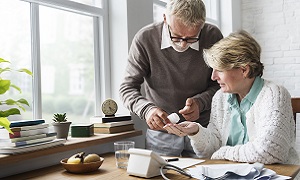
As you prepare for a bronchoscopy, it might involve restrictions on food and medications. Your doctor is going to most likely ask you to stop taking blood-thinning medications. You will also be most likely asked not to eat or drink around eight hours before your procedure.
If you will be going home right after the procedure, it is important to arrange for a friend or family member to take you home. Because of the side effects of the medications, you will not be able to drive. You might also want to have someone stay with you for the night.
The procedure might be done in a clinic or an operating room in a hospital. The entire procedure, as well as recovery time, should take around four hours.
Before the procedure, you are going to be asked to sit back or lie on a table or a bed, at your sides. You are going to be connected to monitors as well so that the healthcare team is able to track your heart rate, blood pressure as well as your oxygen level during your procedure.
Next, you are going to receive sedatives, so that you don’t feel any pain during the procedure.
Procedure
Once you are relaxed, your doctor is going to insert the bronchoscope into your nose. It passes from your nose down to your throat until it reaches the bronchi. The bronchi are the airways in the lungs.
Brushes or needles might be attached to the bronchoscope to collect any tissue samples from the lungs. These samples can help your doctor diagnose any lung condition that you might be having.
Your doctor might also use a process called bronchial washing to collect cells. This involves the spraying of a saline solution on the surface of the airways. Next, the cells are going to be washed off of the surface and then collected as well as looked at under a microscope.
Depending on your condition, your doctor might find one or more of the following:
- Blood
- Mucus
- Swelling
- Infection
- Blockage
- Tumor
If your airways are blocked, a stent might be required to keep them open. This device is a small tube which can be placed into your bronchi with the help of a bronchoscope.
After your doctor is done examining the lungs, the bronchoscope is going to be removed.
After the procedure
After the procedure, you are going to be monitored for several hours. Your mouth and throat might also feel numb for a couple of hours. Unless your numbness wears off, you are not going to be allowed to eat or drink. This generally helps food and liquid, from entering your airways and lungs.
Generally, you should be able to cough and swallow again, when your mouth and throat is no longer numb. You can start with sips of water, and then move on to soft foods, such as soup or applesauce.
Note that you might also experience a mild sore throat, hoarseness, cough, or muscle aches. Gargling with warm water should help you lessen the discomfort.
If you experience any of the following, call your doctor right away.
- Have a fever that lasts over 24 hours
- Have increasing chest pain
- Cough more blood than normal
- Have difficulty breathing
Generally, your doctor is going to discuss the results with you one to three days after your procedure. He/she will most probably talk about how to treat any lung problems if any were discovered. You might need more tests and procedures as well.
If a biopsy was taken during the test, then it is going to need reviewing by a pathologist. Since the tissue samples require special preparation, sometimes test results can take longer than others to return. Some biopsy specimens are going to be sent for genetic testing, which can take over two weeks.
Risks & complications
Complications from a bronchoscopy are not only rare but also mostly minor. They can be related to the procedure itself, or from the sedative or topical numbing medicine.
If a biopsy was taken, you may experience bleeding. Fever is common after a bronchoscopy but it is not always a sign of an infection.
In rare cases, an airway can get injured during the test, and if the lung is punctured, air might collect in the space around the lung, which can cause the collapse of the lungs. This condition is treatable but might require a hospital stay.

